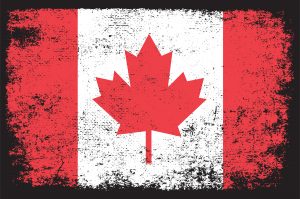
Election is taking place on October 19th and there is a lot of information to take in. In this blog post, we will be discussing the history of Elections in Canada, what you need to know about the upcoming election, and five key moments from past elections. We will also be giving our opinion on how to make education better in Canada. Stay tuned for more information!
Election day in Canada: what you need to know
The first election in Canada was held on July 15th, 1867. At this time, Canada was a collection of British colonies and the vote was only open to white men who were property owners. Since then, voting rights have gradually expanded to include more and more people. In 2015, Elections Canada reported that just over 17 million Canadians were registered to vote.
The history of Election in Canada
Over the years, there have been a number of key moments in Canadian Elections. Here are five of our favourites:
- In 1872, Nova Scotia became the first province to allow women to vote.
- In 1917, Manitoba became the first province to allow all women to vote.
- In 1960, Pierre Trudeau became the first French-Canadian Prime Minister of Canada.
- In 1980, Joe Clark became the youngest Prime Minister in Canadian history.
- In 2015, Justin Trudeau became the second youngest Prime Minister in Canadian history.
Everything you need to know about the upcoming Canadian Federal Election
The next election will be held on October 19th, 2015. Canadians will be electing members of the House of Commons, who will then elect the Prime Minister.
The main parties running in this election are:
- the Conservative Party of Canada
- the Liberal Party of Canada
- the New Democratic Party (NDP)
- the Bloc Québécois
- the Green Party of Canada
Election in Canada: Top Moments
As we mentioned before, there have been a number of key moments in Canadian Elections. Here are five of our favourites:
- In 1872, Nova Scotia became the first province to allow women to vote.
- In 1917, Manitoba became the first province to allow all women to vote.
- In 1960, Pierre Trudeau became the first French-Canadian Prime Minister of Canada.
- In 1980, Joe Clark became the youngest Prime Minister in Canadian history.
- In 2015, Justin Trudeau became the second youngest Prime Minister in Canadian history. What I would do to make education better in Canada
Education is an important issue in any election. Here are our thoughts on how to make education better in Canada:
- Making post-secondary education more affordable
- Improving primary and secondary education
- Investing in early childhood education
- Providing more support for students with special needs
- Encouraging lifelong learning
We hope you have found this blog post helpful. Stay tuned for more election information!
Who is eligible to vote in Canada ?
In order to vote in the Canadian federal election, you must be a Canadian citizen and be at least 18 years old on election day. You will also need to prove your identity and address when you go to vote. If you’re not sure if you’re registered, you can check online or contact your local Elections Canada office.
If you’re not a Canadian citizen, you can still participate in the election by volunteering with a political party or campaign, or by observing the election process.
We hope this blog post has answered all of your questions about voting in Canada. For more information, please visit Elections Canada’s website: elections.ca.
Election day in Canada is just around the corner and we want to make sure you’re prepared! In this blog post, we’ll be discussing the history of Canadian elections, what you need to know about the upcoming election, and five key moments from past elections. We’ll also be giving our opinion on how to make education better in Canada. Stay tuned for more information!